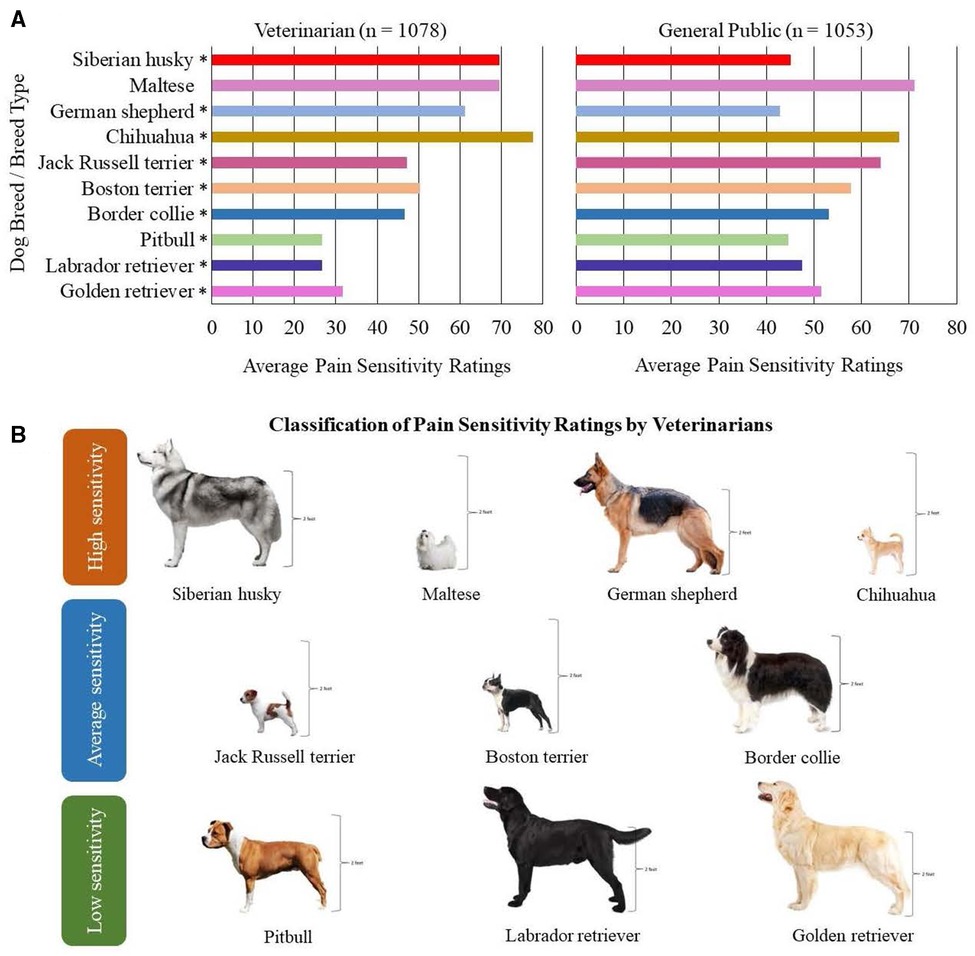2023-06-28 ノースカロライナ州立大学(NCState)
◆研究者はさまざまな品種の犬の感受性を測定し、その結果を獣医師の評価と比較した。実際に品種ごとに痛みの感受性の違いがあることがわかったが、獣医師の評価と一致しない場合もあった。
◆今後は、品種ごとの痛みの感受性の違いの生物学的な原因を探ることで、より効果的な治療法を開発することが期待される。また、獣医診療時には犬のストレスレベルや感情的な反応にも注意を払う必要があるとされている。
<関連情報>
- https://news.ncsu.edu/2023/06/a-dogs-breed-can-affect-pain-sensitivity-but-not-necessarily-the-way-your-vet-may-think/
- https://www.frontiersin.org/articles/10.3389/fpain.2023.1165340/full
犬種によって痛みの感じ方は異なるが、獣医師が考えているような違いはない
Pain sensitivity differs between dog breeds but not in the way veterinarians believe
Rachel M. P. Caddiell, Rachael M. Cunningham, Philip A. White, B. Duncan X. Lascelles and Margaret E. Gruen
Frontiers in Pain Research Published:26 June 2023
DOI:https://doi.org/10.3389/fpain.2023.1165340

Background: Veterinarians hold distinct breed-specific pain sensitivity beliefs that differ from the general public but are highly consistent with one another. This is remarkable as there is no current scientific evidence for biological differences in pain sensitivity across dog breeds. Therefore, the present study evaluated whether pain sensitivity thresholds differ across a set of dog breeds and, if so, whether veterinarians’ pain sensitivity ratings explain these differences or whether these ratings are attributed to behavioral characteristics.
Methods: Pain sensitivity thresholds [using quantitative sensory testing (QST) methods] and canine behaviors (using owner questionnaires and emotional reactivity tests) were prospectively measured across selected dog breeds. Adult, healthy dogs from 10 dog breeds/breed types were recruited, representing breeds subjectively rated by veterinarians as high (chihuahua, German shepherd, Maltese, Siberian husky), average (border collie, Boston terrier, Jack Russell terrier), or low (golden retriever, pitbull, Labrador retriever) pain sensitivity. A final sample of 149 dogs was included in statistical analyses.
Results: Veterinarians’ pain sensitivity ratings provided a minimal explanation for pain sensitivity thresholds measured using QST in dogs; however, dog breeds did differ in their pain sensitivity thresholds across the QST methods evaluated. Breed differences were observed for some aspects of emotional reactivity tests; however, these behavioral differences did not explain the differences in pain sensitivity thresholds found. Veterinarians’ pain sensitivity ratings were positively associated with dog approach scores for the disgruntled stranger test suggesting that the way dogs greet strangers may be a factor influencing veterinarians’ ratings of pain sensitivity across dog breeds.
Conclusions and clinical relevance: Overall, these findings highlight a need to investigate biological mechanisms that may explain breed differences in pain sensitivity because this may inform pain management recommendations. Further, future research should focus on when and how these breed-specific pain sensitivity beliefs developed in veterinarians, as veterinarians’ beliefs could impact the recognition and treatment of pain for canine patients.

